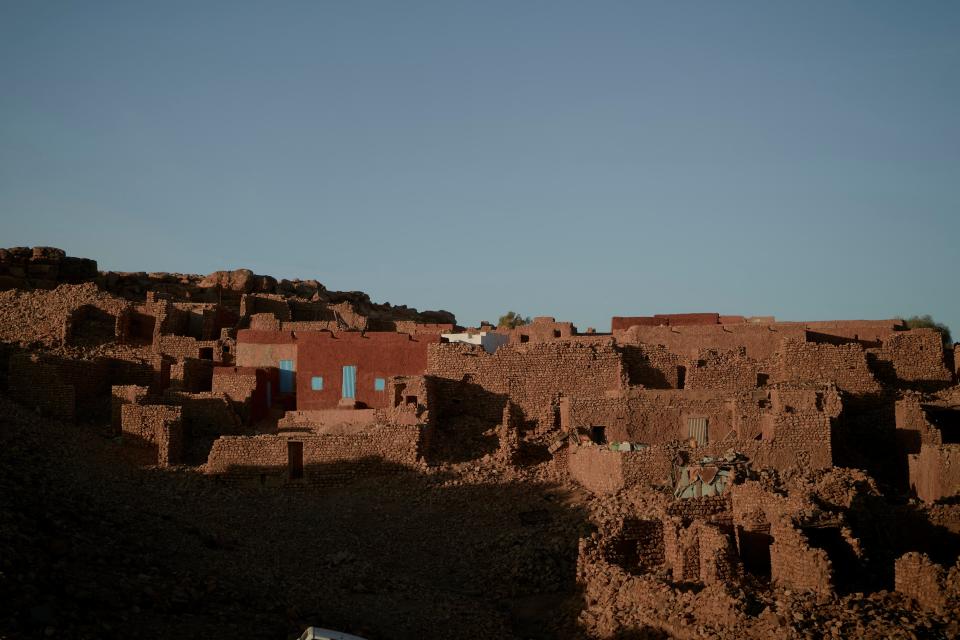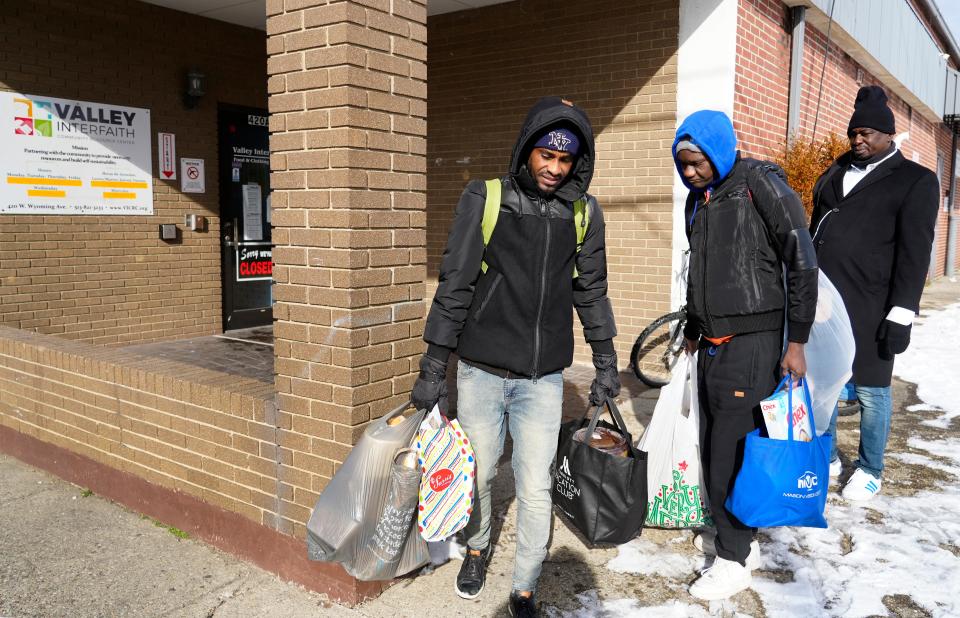Ohio's influx of Mauritanian immigrants stretches resources to help asylum seekers
As 2024 begins, Ohio immigration officials and nonprofits are grappling with a huge influx of Mauritanian immigrants – though it’s impossible to say just how many have arrived over the past year.
Several who work with the community said the number of newcomers is likely in the thousands – potentially meaning the population has doubled since 2022 – though it’s difficult to pinpoint precisely because many are undocumented and few speak English, making it difficult for area agencies to gather even anecdotal data.
“We’ve hired some French interpreters to ask some questions because I’m trying to learn their journey,” said John Keuffer of Valley Interfaith, an organization that helps provide food and clothing to people needing help.
“A few people say they’re seeking asylum from racism, for a better job or a better future.”
From 2019: Mauritanian immigrant now free, but 'lost everything' during one year in ICE detention

The Islamic Republic of Mauritania is a West African nation of nearly 5 million citizens that became independent of France in 1960. It’s considered one of the least-developed countries in the world and is politically fraught: The country was the last in the world to abolish slavery in 1981, and even still, it wasn’t categorized as a criminal offense until 2007.
To this day, “there is blatant discrimination in this country, including slavery,” said Houleye Thiam, a Mauritania-born activist whose father was imprisoned and tortured during her youth for helping to write The Manifesto of the Black Mauritanian in 1986. Thiam spoke during an Ohio Immigrant Alliance forum titled Dystopia, Then Deportation: Systemic Denial of “Dignity, Freedom & Justice” for Black Migrants in the United States.
Thiam’s father survived years of imprisonment, after which he moved with his family to Senegal. Houleye Thiam works with the Ohio Department of Administrative Services in Columbus.
The U.S. Department of State condemned a host of “significant human rights issues” in a 2022 report. Those issues included the “continued existence of slavery and slavery-related practices” stemming from a historic caste system in which lighter-skinned “White Moors” enslaved darker-skinned “Black Moors.”
The United Nations and international press outlets report that up to 20% of the nation’s citizens are enslaved, according to the CIA's World FactBook. In 2018, The Enquirer reported on Mauritanians being deported from Ohio back to Mauritania, from where they’d fled because their citizenship there had previously been revoked. People speaking at the Alliance forum said the fates of several of those deported people are unknown.
“There are no human rights in Mauritania, especially for Black Mauritanians who are discriminated against. People are being treated as slaves,” said one asylum-seeking Afro-Mauritanian named Bachirou, who also spoke at the Alliance forum. Bachirou declined to provide his last name to The Enquirer for fear that speaking publicly would affect his attempts to seek asylum.
Bachirou said his father was killed in prison in 1990. His family ever since has sought justice.
“What we are asking for is simple. … We want justice for my family,” said Bachirou, using Thiam as an interpreter. “But every time we go out to get it, we face violence from the police.”
He said police hit one protesting friend so hard with a pistol that the friend lost teeth.
From 2018: Trump increases deportations to Mauritania, where slavery dominates culture
David Taylor, spokesman of Catholic Charities Southwestern Ohio, said that while his organization hasn’t been asked to help resettle Mauritanians through official government-backed channels, it has helped issue identification cards for 96 Mauritanians in 2023 – up from zero in 2022.

Keuffer, of Valley Interfaith, said it’s difficult finding people able to communicate with the incoming Mauritanians because only some speak French, while others speak languages for which translators are harder to find, such as Fula or Fulani. The language barrier makes it difficult to understand what help some people need.
“The main thing I’m trying to do is to learn more,” Keuffer said. “We want to help them transition.”
At the same time, he added, resources are stretched thin, especially in Cincinnati's suburbs, which seems to be the hardest hit by the newcomers.
"My attitude is we're going to keep serving until we have nothing left to give," he said.
This article originally appeared on Cincinnati Enquirer: More immigrants from Mauritania to Ohio mean fewer resources to help

